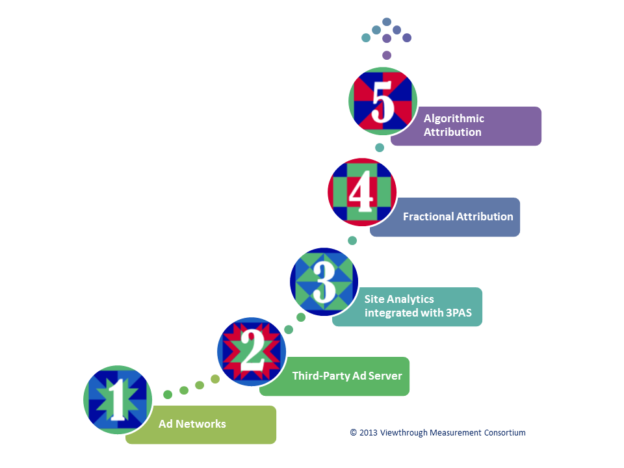Digital marketers, the time has come to heed the call and end the rampant chaos and confusion by putting in place page tag moratoriums. Today.
WHY THE MORATORIUM?
Upon taking a closer look at the confusion and chaos that the industry has come to tolerate clearly illustrates the rationale.
CONFUSION
For too many and for too long, digital marketing brings with it page tagging needs that need to be executed by technical teams in other departments. Moreover, there are often precision measurement implications to retargeting and conversion tags. Although some legacy ad networks are making strategic moves, this confusion has definitely been a money-making opportunity. Adding to the confusion, the ad networks are rapidly right-sizing their staff, diversifying their offerings and/or reinventing themselves as exchanges, DMPs, DSPs, data layers and more.
That said, the real confusion can be split into three distinct aspects of communication within the digital marketing process:
1. Opaque Reporting – With the advent of DSP’s, OpenRTB and the IAB’s taxonomy, not sharing more performance information is problematic. From an analytics standpoint, not knowing where your high-performing audience segments are coming from and/or where they are in the conversion funnel becomes a opportuniy cost. If you are focused on conversion this makes your campaigns spray and pray.
2. Unclear Benefit – All too often, ad networks are quick and aggressive about getting their tags placed on pages…why? More details and in plain English are needed beyond anecdotal stories and faux studies of performance success. Agencies too have an oppotunity here to better steward their client’s brands. Exactly what is the specific benefit of retargeting, optimization or incremental conversion. A simple litmus test is: proceed when and only when the level of benefit exceeds the level of effort.
3. Data Leakage Risk – In many cases, it is not clear who owns the cookies and/or the behavioral data vapor trail that is a byproduct of site traffic/ad campaigns. Without clarity on this important intellectual property it shouldn’t be a surprise when you find that the competitors are benefitting from the campaigns that you just ran. With the growing calls for privacy and consumer control this should not be left to chance.
The reality is that digital media is confusing enough rife with opportunities for swirl. Client-side marketers need to continue leaning in, stepping-up and demanding more clarity about those bells and whistles. Those that are not comfortable dealing with the more technical aspects of digital marketing need to get an agency, consultant and/or in-house staff that are experienced and have demonstrated success.
CHAOS
To suggest that the technical aspects of today’s page tagging create chaos would be an understatement. Historically, page tags have fallen between the organizational cracks into the cross-functional abyss. Page tags have created serious problems for digital marketers and IT/engineering teams alike. With neither resourced properly to deal with this fast-moving technology that is growing more complex – mayhem and frayed relationships are an all too common result.
The good news is that technology is now available to help deal with the chaos: universal tag management systems like BrightTag, Tealium, Ensighten and TagMan can help. The technology also offers three different kind of benefits:
1. Tag Management – There is no question that proliferating page tags are the Achilles heel of most digital marketer and site IT/engineering teams. Today page tags are often late being implemented due to resource constraints with seemingly simple requests triggering requirements-level justification. As a result, in order to get any tags in place the real need is often scaled back to avoid the upfront time – that means a less than ideal deployment and less meaningful measurement. If the tags actually do get implemented, they are at certainly risk of randomly disappearing mid-campaign further compromising measurement. Last, once they are live, some page tags are escape notice and are never decommissioned upon campaign end. Don’t expect ad networks to remind you to remove their tags. Phantom cookie pools are probably rampant.
2. Data Sharing – Beyond rendering tags on pages at the right places and the right times, the better tag management systems are being baked into site CMS (content management systems) to enable the routine passing of data attributes. Instead of hot-rodding simplistic 3rd party ad server container tags, the newer platforms are deeply integrated and have Web-based interfaces that marketing, IT and agencies can access. A huge benefit of this is avoiding the software development-QA queue and the subsequent management hassle of dealing with one-off JavaScript code.
3. Tag Latency – Most page tags are “dumb,” meaning that they always fire all the time. So-called “smart” tags now offer conditional tag rendering, which provides marketers with even more precise control. More advanced approaches like BrightTag’s take advantage of super-fast asynchronous server-server connections, i.e. while the page is downloading in the user’s browser. If your page tag functionality can’t be called through their server-side API connection then latency is unavoidable.
The result of this is compromised measurement and unnecessary latency putting digital ad campaigns at risk. It just doesn’t have to be this way with universal tag management technologies that make the entire process easier. For the first-time ever, agency ad ops, analytics, media planning and engineering teams have the chance to collaboratively and proactively manage burgeoning page tags.
PRETZEL LOGIC
A recent article by Joe Marchese of MediaPost, Putting Lipstick On The Banner puts it best. While I vehemently disagree with the assessment of display ad efficacy (there’s more to display than clicks), Mr. Marchese does make a good point about the apparent pretzel logic of digital media.
Already challenged to explain the value of their existing campaigns, by adding more complexity digital marketers are usually not really improving their campaigns. With more retargeting, research and tracking tags on the horizon (bright-shiny objects) – savvy digital marketers and even partners can see why getting their house in order with their own version of The Moratorium makes total sense.
The message of The Moratorium to ad networks, data providers and other meta media purveyors is a simple one: don’t bother asking for page tags unless you’re also bringing solutions to the chaos and confusion that you’re also bringing. Behind it is a more sustainable business relationship built on transparency and success.
Digital marketers will continue to get the results that they deserve, until they demand better from media partners and even digital agencies.
Until then the answer should be: No, you may not place a tag on the site.

















